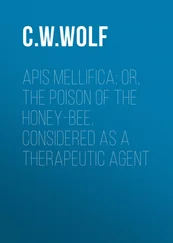
Figure 1.8 Bait hives are small nest boxes that are filled with empty comb and sometimes lures or attractants (lemon grass oil or Nasanov pheromone). During the swarm season (May to June in the northeastern United States), scout bees search out and select bait hives during house hunting behaviors. Wild honey bees are well adapted to Varroa and often fare much better than managed bees. Therefore, bait hives are a simple means for the acquisition of locally adapted honey bee stock when they are used in places where there are few beekeepers.
Goal 2: Promote Drone Comb Building and Drone Mating in Congregation Areas
Modern apiarists work to limit the amount of drone comb produced by honey bees because beekeepers have learned that by preventing their colonies from producing drones, they can increase honey production (Seeley 2002). Furthermore, drone comb is the preferred site for Varroa reproduction. Limiting it, however, partially “castrates” a colony by reducing the ability of a colony to contribute to the population of drones in a region, an important driver of honey bee diversity and fitness (Seeley 2017b). It is now known that a colony's health and productivity is enhanced by its having high genetic diversity among its worker bees, which arises from the multiple mating (polyandry) strategy of queen honey bees (Tarpy and Seeley 2006; Seeley and Tarpy 2007; Mattila and Seeley 2007). On average, a queen honey bee mates with, and acquires sperm from 10 to 20 drones. Inhibiting drone production in colonies hinders the maintenance of genetic diversity within a region, including the genes that may hold resistance to mites (Rosenkranz et al. 2010).
Goal 3: Cull Failing Colonies Before Collapse
Some veterinarians with experience in honey bee disease and/or epidemiology have campaigned against the emergence of Treatment‐Free Beekeeping or Natural Beekeeping because of the risk of spreading disease through the collapse of colonies. Perhaps most alarming is the phenomenon of “mite bomb” colonies (ones collapsing from high mite loads) that spread mites and virulent strains of the Deformed Wing Virus to neighboring colonies (Martin et al. 2012). When Varroa mites reached Hawaii, Martin and colleagues observed a drastic increase in the prevalence of DWV from 10% to 100% (the percentage of honey bee colonies infected with DWV virus), a millionfold increase in DWV viral copies in infected bees, and a reduction in DWV diversity to a single highly contagious strain. A collapse of 274 of 419 managed colonies on Oahu Island followed. The beekeeper should either treat Varroa‐infested colonies once a critical mite infestation level is reached (typically c. three mites per hundred bees sampled) or cull (euthanize) highly infested colonies before they can spread their mites to neighboring colonies or surrounding apiaries.
Goal 4: Select Quality Queens and Let the Bees Requeen!
A vigorously laying queen is the most efficient promoter of good genes, so it is of utmost importance to keep colonies headed by highly fertile queens. If a hive must be requeened, it is better to allow the bees to choose their new queen (if age‐appropriate larvae are present) than to replace her artificially since it has been shown that when bees are confronted with an emergency need for queen rearing, they do not select larvae at random for their queen cells (as a beekeeper might), but instead select larvae of certain patrilines (Moritz et al. 2005). In the future, beekeepers and bee doctors may be able to better assess queen quality through quantitative means; queen quality, judged in terms of body weight, is a good predictor of a queen's mating flight number, ovarian size, and overall mating success (Amiri et al. 2017).
Although insects lack the immunological memory provided by the antibodies of vertebrates, queen bees can recognize specific pathogens and prime their offspring against them (Salmela et al. 2015). The queen passes these immune signals to her future offspring via the egg‐yolk vitellogenin, a protein that has been shown to bind harmful bacteria, including the P. larvae of American foulbrood. Queens of local origin will pass onto their larva the essential immune cells that are adapted to the pathogens she has encountered in her environment, giving her offspring the chance to build defenses against disease agents before they (the bees) emerge and become exposed to pathogens in the nest.
The ways in which honey bee colonies live in the wild differ substantially from those experienced by colonies living in apiaries, where they are managed by beekeepers for honey production or crop pollination. Although there is debate about whether honey bees are truly domesticated (modified genetically to be more useful to humans), it is certain that humans have changed their living conditions through a variety of means. Just as domestic animals are manipulated by farmers in their housing, feed, and even medical care, so too are the colonies of honey bees that are managed by beekeepers. We suggest the following goals to help improve colony fitness through alterations of honey bee lifestyle.
Goal 1: Boost Rather than Disrupt Social Immunity of the Superorganism
In the next chapter we will learn that a honey bee colony is a superorganism. In other words, it is a highly integrated unit of function that has been shaped by natural selection to function as an integrated whole. One result of this high level of organization is that the immune system of a worker honey bee is relatively simple compared to those of non‐social bees. With this in mind, we should note that there the beekeeper and bee doctor can inadvertantly weaken the social immunity of the colony. Perhaps the most damaging is breaking and reducing the propolis envelope, which will impair the colony's social immunity and compromise honey bee health. Therefore, the number of times a hive is opened for inspections or manipulations should be reduced to a minimum. The layers of propolis lining the walls and inner cover are playing an important role and should be left intact. The beekeeper can stimulate his/her bees living in a hive to build a complete propolis envelope by using hives whose inner walls have been roughened or by lining the interior surfaces with propolis collection screens.
Goal 2: Quarantine from Pests and Pathogens
Bee doctors should work closely with beekeepers to avoid bringing honey bee colonies from an outside location into an established apiary. The most important drivers of honey bee die‐offs in North America have all been caused by emerging pests and pathogens that came from other parts of the world – Varroa mites from Asia, small hive beetles from Africa, and both chalkbrood fungus and acarine mites from Europe (Seeley 2017b). Returning to the SIR model, it follows that beekeepers should reduce as much as possible the introduction of new colonies that represent the “Susceptibles” into an apiary. If these introduced colonies are exposed to or are carrying a novel pathogen, then they can produce outbreaks. Specifically, Delaplane (2017) warns against bringing in outside bees to replace dead outs and recommends instead that these apiary losses should be replaced by splits made within the same apiary. Loftus et al. (2016) found in their study of the effects of colony size and frequent swarming on resistance to Varroa that 60 m was not a sufficient distance between apiaries to avoid spread of Varroa between apiaries during a nectar dearth. Three of the 12 small‐hive colonies in this experiment suddenly acquired high mite loads when one of the large‐hive colonies collapsed in the adjacent apiary. Evidently, robbers from these three small colonies brought home Varroa from the large colony that was collapsing, resulting in their own collapses several weeks later. It is therefore recommended that introducing new colonies to an apiary be done only after an appropriate period of quarantine in a separate location at least 1 km away.
Читать дальше













